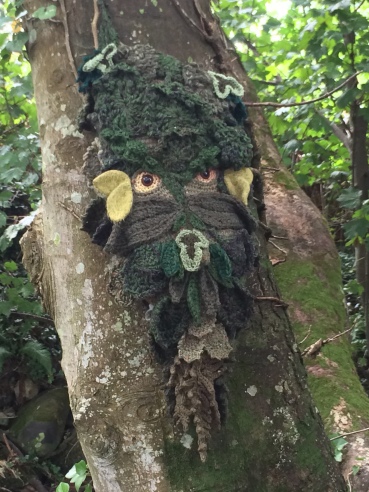 If you’ve read my novel, Beltane then you’ll know the Green Man is a key character in the book. If you’ve not read it then I’m afraid I can’t really say much more than that without a spoiler alert but if you’ve seen the book cover you can probably guess that a Green Man features in it somewhere.
If you’ve read my novel, Beltane then you’ll know the Green Man is a key character in the book. If you’ve not read it then I’m afraid I can’t really say much more than that without a spoiler alert but if you’ve seen the book cover you can probably guess that a Green Man features in it somewhere.
 My original title for Beltane was The Green Man but after one too many person said, ‘Sounds like a pub’ I decided Beltane was a better option. Since the book was published, readers have very kindly sent me photos of various Green Men. I’ve now got pictures of the Green Man from locations all over the UK but I’ve realised that he is a lot more widespread than that.
My original title for Beltane was The Green Man but after one too many person said, ‘Sounds like a pub’ I decided Beltane was a better option. Since the book was published, readers have very kindly sent me photos of various Green Men. I’ve now got pictures of the Green Man from locations all over the UK but I’ve realised that he is a lot more widespread than that.
There are many different depictions of the Green Man but the common feature is that the face is surrounded by foliage or has foliage coming out of his mouth and nose or (like my lovely book cover) his hair is made from leaves and his skin from bark. The term ‘Green Man’ wasn’t used until 1939 when Lady Raglan coined it in an article about ‘The Green Man in Church Architecture’ which was published in the Folklore Journal. Before that they were known as foliate heads which are surprisingly ancient.
There are Roman examples of foliate heads and similar carvings from Mesopotamian (now Iraq). Surprisingly, as he’s (arguably) associated with fertility and nature, he’s found in many mediaeval churches carved in wood or stone. He enjoyed a revival in the nineteenth century when he was a favourite of the Gothic revivalist and arts and crafts movement. Since then he’s been inspiration to many artists, had a festival named after him, titled a lot of albums and given his name to a Morris side.
 The Green Man can get confused with Jack in the Green (the trickster character of English May Day parades), Green George (who is the leaf covered young man in mummer’s plays), John Barleycorn (the character in the folk song which personifies the life cycle of barley) and Robin Hood. But he predates all of them. Some believe that he evolved from older gods such as the Celtic Cernunnos or the Greek deities, Pan and Dionysus.
The Green Man can get confused with Jack in the Green (the trickster character of English May Day parades), Green George (who is the leaf covered young man in mummer’s plays), John Barleycorn (the character in the folk song which personifies the life cycle of barley) and Robin Hood. But he predates all of them. Some believe that he evolved from older gods such as the Celtic Cernunnos or the Greek deities, Pan and Dionysus.
Interestingly, there’s no clear understanding of what he represents which gives a lot of scope for different theories. He’s considered to be a symbol of death and rebirth, of fertility and of life and nature. There’s not even a clear consensus that he’s a pagan symbol as some claim that the foliage issuing from his mouth symbolises the Holy Spirit and others have claimed parallels with Jesus. For me, he’s a symbol of nature and the fragile balance we need to find to sustain the earth and I hope some of that comes through in Beltane.
 I hope you enjoy my Green Man pictures. I think they’re all remarkably handsome but I’m particularly fond of the yarn one. If you’ve got a photo of a Green Man you’d like to share then I’d love to see it. You can add a comment below, tweet me at @Alyswestyork, post on my Facebook page @alyswestwrites or visit my website at www.alyswest.com
I hope you enjoy my Green Man pictures. I think they’re all remarkably handsome but I’m particularly fond of the yarn one. If you’ve got a photo of a Green Man you’d like to share then I’d love to see it. You can add a comment below, tweet me at @Alyswestyork, post on my Facebook page @alyswestwrites or visit my website at www.alyswest.com
You can find out more about Beltane by clicking here.
A shorter version of this post was originally published on Fabrian Books website in June 2017.